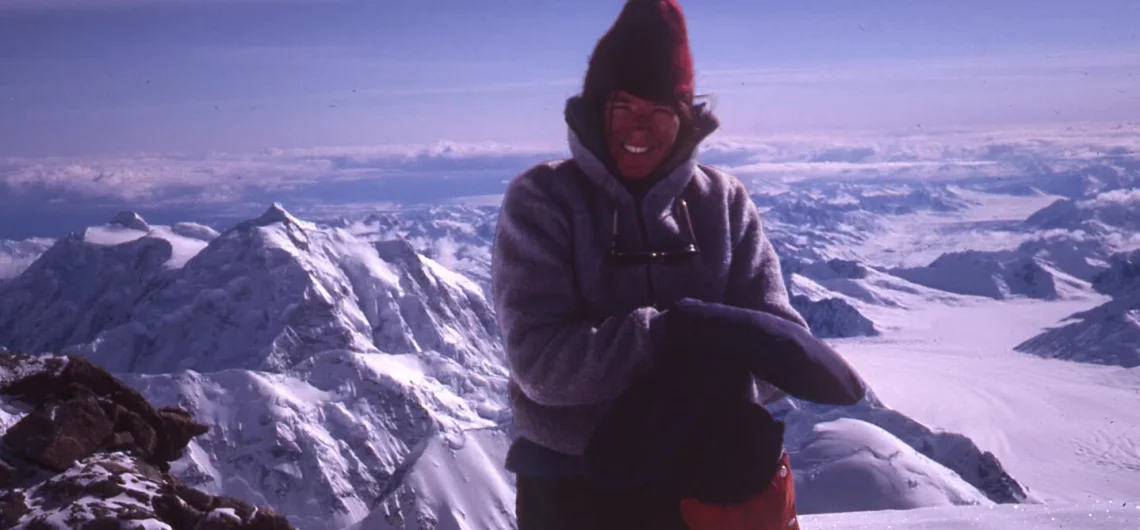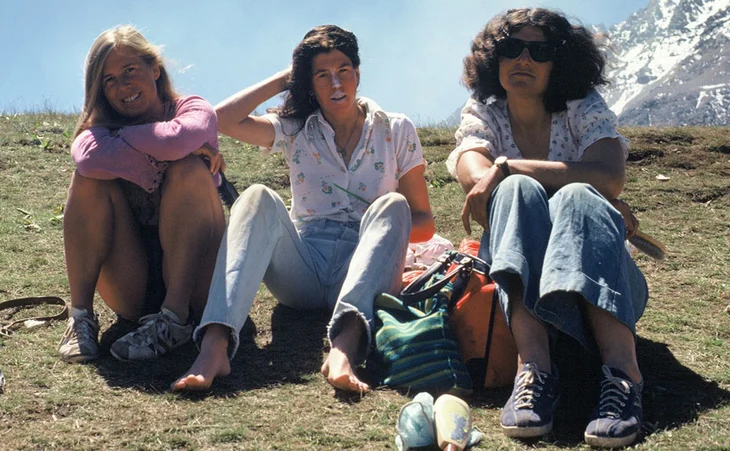Marty Hoey, who would have become the first American woman to climb Everest, died over forty years ago in 1982, somewhere above 8000 meters on Everest’s North Face, several thousand feet into a crevasse. She was never seen or heard from again.
She took part in the 1982 Mount Everest Expedition, which attempted to summit the hitherto unclimbed Tibetan North Ridge. According to reports, Hoey did not correctly fasten her climbing harness and died as the expedition reached its No. 6 advance camp at 26,600 feet.
According to Jim Wickwire, who was behind her as she leaned back and then separated from a fixed rope, “a day or two later, she would have stood a very good chance of becoming the first woman from this country to reach the summit.”
The expedition was the first American group to tackle Everest from the north in decades, the result of an emerging détente with China, which had blocked Tibet to Westerners in general and climbing in particular.
Despite the fact that the attempt ended in tragedy, the team was instrumental in reopening the doors to exploration and mountaineering in Tibet.
The team members were among the best mountaineers in the United States at the time. Marty Hoey, 31, who did not return home, deserves special recognition for who she was and the road she blazed.
Marty was a person of ethics and integrity who was personable and fun-loving. She adored Mount Rainier and was proud to be a member of Rainier Mountaineering Inc. She admired her friend and mentor Lou Whittaker and had a strong bond with her fellow guides.
She climbed Rainier over 100 times and worked as a Denali guide for RMI; she also participated in the 1974 USSR-USA Pamir Expedition, during which she climbed Pik Lenin, and the 1976 Indo-American Nanda Devi Expedition. These important voyages were plagued by tragedy, which was widely reported. The incidents did not reduce her admiration for high mountains but rather increased it.
Marty worked with the Snowbird ski patrol and avalanche teams in her “off season,” where we were friends and teammates on the mountain and in avalanche and rescue operations.
Marty enjoyed horses, squash, and reading. Thomas Mann’s The Magic Mountain was her favorite book. She enjoyed classical music, and we would go to performances at the Mormon Tabernacle in groups.
She was a highly friendly and engaging person in social situations. She was curious and intelligent, but not superior or patronizing. Anyone could be her friend, and I don’t believe she had any adversaries.
While she was generally respectful of others and their pursuits, I recall her being perplexed by the northern Rockies’ fly-fishing culture, as well as the time and money invested in catching and releasing a fish. “How hard can it be to outsmart a trout?” she once wondered. “How big is a trout’s brain?” I remained silent, knowing that trout generally outwitted me.
Marty was laser-focused and professional in the mountains. She put forth a lot of effort as a climber and a guide.
She possessed something more valuable than mountaineering ability: judgment. Some of our extended circle of patrollers and mountaineers began climbing and skiing steep couloirs in the late 1970s. Marty heard about our escapades, wanted to play, and suggested we ski the Gibraltar slope, a steep 3000-foot slope between Gibraltar Rock and the headwall of Rainier’s Nisqually Glacier. A small group of people created a strategy based on her proposal and proceeded up the mountain and up to Camp Muir. Based on firsthand information, we planned a predawn start to go beneath Gibraltar Rock, climb the chute, and ski it. We planned to tackle the Rainier summit first, and then ski down another glacier path if the couloir didn’t work out.
Except for the increasing wind, the night of our attempt was beautiful. We strapped our skis to our packs and began climbing in crampons in two rope teams. As we went, the rocks began to fall as we gradually ascended in open steep terrain with nowhere to go but up. Marty was struck in the arm, while I was struck in the neck.
Our teams met for a brief while, and as a novice glacier traveler, I proposed avoiding the rockfall from Gibraltar by travelling towards the Nisqually Glacier. Everything was frozen in the middle of the night. Marty answered no, that the present danger we were facing was smaller than the prospective danger of traveling beneath the seracs of Nisqually Headwall. I agreed.
Shortly after our conversation, a tremendous icefall pulled away, causing one of the greatest avalanches I have ever witnessed, into the territory I had indicated, as if on cue.
We finished the Gibraltar Chute, bypassed the peak because of the winds, and avoided the chute because it was too icy for our edges. We chose a different glacier path down, which was a stunning drop.
Marty died on May 15, 1982, after slipping out of her harness without properly double threading it back into its buckle (harnesses now feature auto-locking buckles, but previously had to be manually double threaded).
In his biography Addicted to Danger (1998), her companion Jim Wickwire stated, “I heard a sudden pinging sound and turned my head to see Marty pitching backward, head-down the icy slope.” She rolled onto her side and reached for the rope, but slipped past it and vanished into the mist and over a massive ice cliff. “Not once,” Wickwire writes, “did she cry out.”
Reinhold Messner collated testimonies from survivors of bad falls who said they did not feel the fall or the impact. The concept provides solace: people who endure fatal falls are spared last deadly pain. Marty may not have felt her fall, but her mother, father, friends, and the climbing community certainly did.
Despite the fact that the attempt ended in tragedy, the team was instrumental in reopening the doors to exploration and mountaineering in Tibet.
The team members were among the best mountaineers in the United States at the time. Marty Hoey, 31, who did not return home, deserves special recognition for who she was and the road she blazed.
Marty was a person of ethics and integrity who was personable and fun-loving. She adored Mount Rainier and was proud to be a member of Rainier Mountaineering Inc. She admired her friend and mentor Lou Whittaker and had a strong bond with her fellow guides.
Who was Marty Hoey?
Marty Hoey (1951 – May 15, 1982) was a climber who took part in a Mount Everest trip in 1982. She died after falling over the edge of the Great Couloir during an attempt to become the first American woman to summit Everest due to an insecure climbing harness.
Hoey was perhaps the world’s finest female high-altitude mountaineer at the time of her death, according to Everest expedition leader Lou Whittaker. She has climbed Mount Rainier in Washington over 100 times and guided excursions to Denali in Alaska.
Hoey worked as the Snowbird ski resort’s safety patrol chief for Dick Bass.
She met him and accompanied him on his successful Mount McKinley trip, and he was a part of her climbing group when she died in 1982 on Mount Everest. When Bass finally reached the peak of Everest in 1985, he dedicated his journey to her.
How She Fell to Death on Everest
Jim Wickwire, an expedition partner, claimed he and Hoey were perched on a 45-degree rock slope at around 26,600 feet (8,100 m), hauling supplies to create Camp 6, with the intention of ascending to the summit in the following day or two. According to Wickwire, Hoey leaned back to let him to go ahead, and a buckle on her harness opened, freeing her from the fixed rope and sending her plummeting 6,000 feet (1,800 m) into an abyss.
Was Marty Hoey’s body ever found?
Hoey’s boy was never found. Whittaker said, “I can’t think of a more beautiful resting place; she fell into the prettiest place that ever was.”
Whittaker attributed the expedition’s inability to climb Everest to Hoey’s death, saying, “If Marty had been with us, we would have made it.” The 16 surviving team members, all males, would undertake a third and final try, only to be driven back by strong weather well short of the summit.
Related: Was George Mallory’s body ever found on Everest?
![]()


